Throwback Thursday: The Truth About Asteroids
How afraid of them does the science say you should actually be?
“Most estimates of the mortality risk posed by asteroid impacts put it at about the same risk as flying in a commercial airliner. However, you have to remember that this is like the entire human race riding the plane — it is one of the few risks that really could wipe us all out.” –Nathan Myhrvold
We’re all aware that one of the ways that human life on Earth could end, conceivably, is the same way that the dinosaurs went down.
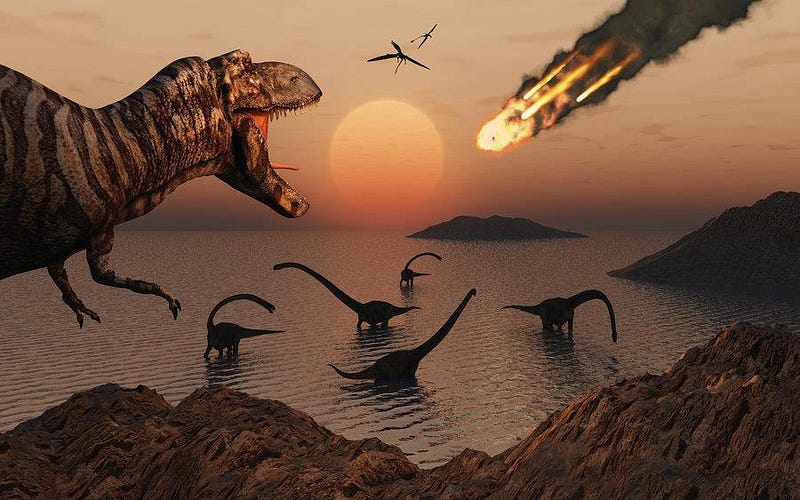
A large enough asteroid striking Earth at a typically colossal speed — tens to hundreds of miles/kilometers per second — could catastrophically cause a mass extinction unseen on Earth in the past 65 million years. It’s an unsettling thought: that if a large enough space rock were randomly hurled in our direction, life as we know it on our planet would be dramatically altered, and the entire human race would very likely be one of its casualties.
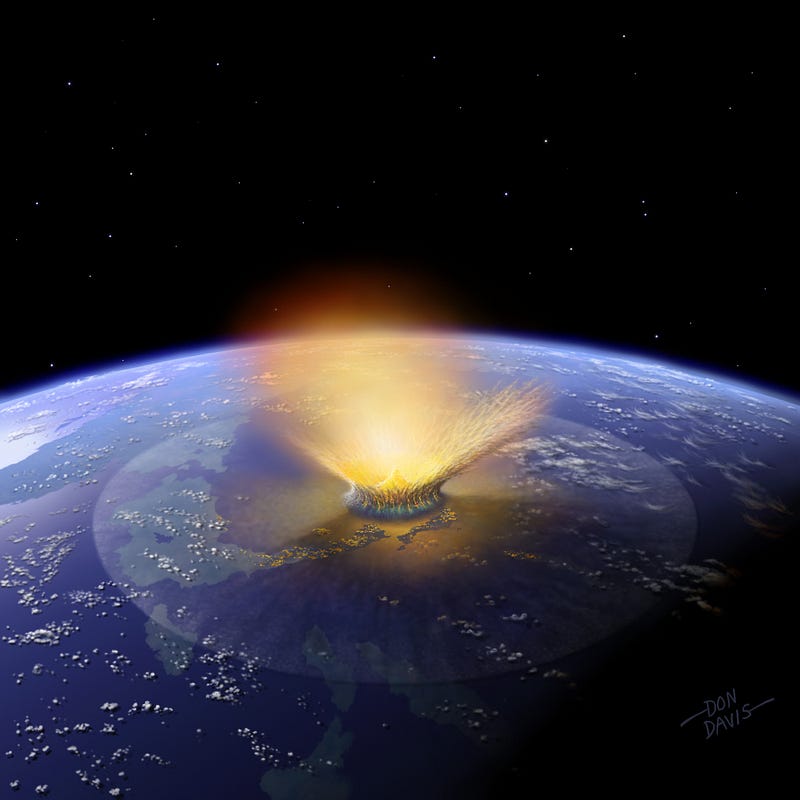
Even barring a disaster of species-killing proportions, large asteroid strikes are common enough that an ill-placed strike could be disastrous. Take Barringer Crater (also known as Meteor Crater), for example: formed just 50,000 years ago by the impact of a “city-killer” sized asteroid, it left a crater 1,200 meters (3,900 feet) in diameter. If comparable asteroid strike occurred over a densely populated area like New York City, London or Tokyo, millions of people could be killed, and at least hundreds of billions of dollars worth of damage would easily be done.
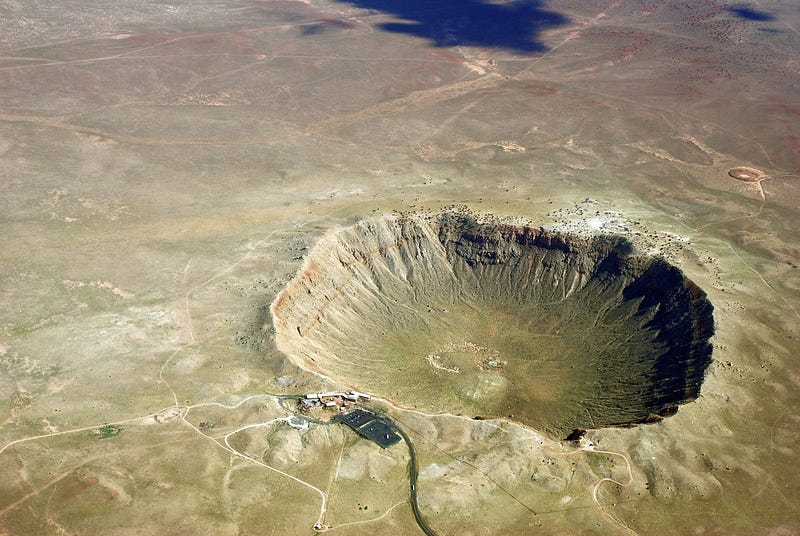
And — as you’re all very familiar with — more recently, some major events have occurred to remind us how devastating the Universe can be.
In 1908, a huge fireball descended over Russia, followed by a midair explosion. The heat and impact could be felt from up to 40 miles (65 kilometers) away, as people felt like their bodies were on fire and were literally knocked over. Nineteen years later, the site of the Tunguska Event was discovered, and for about 40 kilometers in all directions, the terrain was completely leveled.
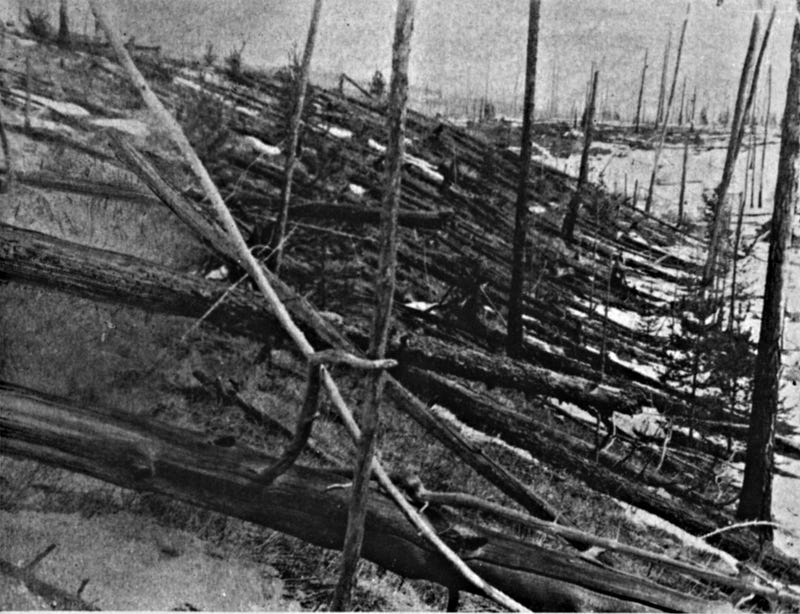
About 80 million full-grown trees had been knocked over by an explosion estimated to have released the equivalent of 10 million tonnes of TNT exploding, or about 40% as much energy as the largest nuclear bomb ever detonated on Earth.
What’s truly frightening about this event is that it very likely occurred due to an asteroid that was a mere 100 meters (or 330 feet) in diameter, weighing “only” around 100,000 tonnes. This was probably about the same size — give or take a factor of two or three — as the asteroid that created Meteor Crater. But you’re probably far more familiar with an even more recent event.
Just a year ago, a 15 meter wide asteroid that we never saw coming hit Earth’s atmosphere over Chelyabinsk, Russia, injuring over 1,000 people and causing significant property damage. Although this was maybe only 5% as powerful as the Tunguska event, it’s much more frightening because it only happened a year ago!

Now, the idea that you could be killed by a space rock — or that all of humanity could be wiped out due to one — is no doubt terrifying. But humans are notoriously bad at estimating the risk due to infrequent but catastrophic events, and the only cure for that is quantitative science.
Which is why I was infuriated when I came across this Gawker article.
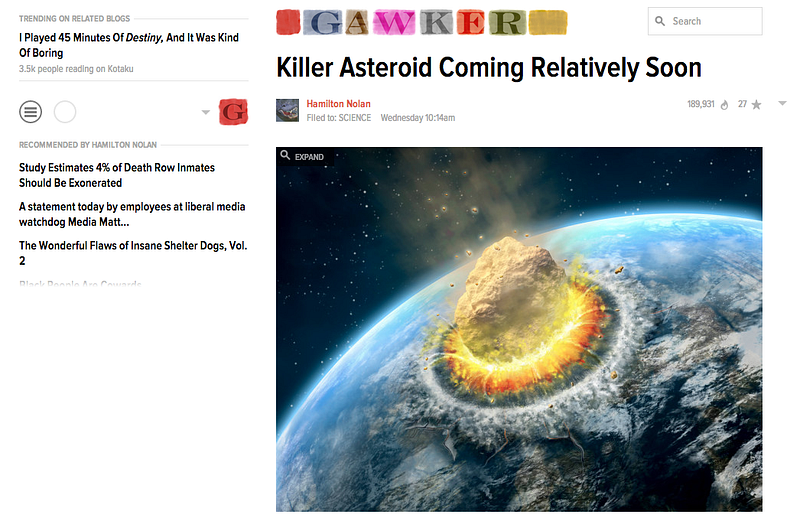
You see, the B612 Foundation has done some remarkable work tracking recent asteroid impacts on our planet, and has found that 26 asteroids have struck Earth since the year 2000. The “fear factor” here is that we didn’t see a single one coming, and were completely caught by surprise.
It’s a well-known fact that city-killer asteroids, like the one that caused the Tunguska event or Meteor Crater, strike Earth anywhere between once every couple of millenium to possibly as frequently as once a century. In addition, even though we’ve discovered tens of thousands of asteroids, we’ve only observed an estimated 1% of the potentially severely damaging ones out there.
https://www.youtube.com/watch?v=66mHHaWtlt0
But how high is the risk? Consider this analysis:
- With tens-of-thousands of city-killer-and-larger asteroids discovered,
- Even if that’s 1% of the total out there, meaning there are millions,
- Even if we assume that they all wind up hitting Earth eventually, and
- Even if the rate of city-killers hitting Earth is the most pessimistic estimate of once-per-century,
- That means there will be no asteroids left in the Solar System, because they all will have struck Earth, in another few hundred million years.
Think someone’s overestimated something there? Yeah, me too.
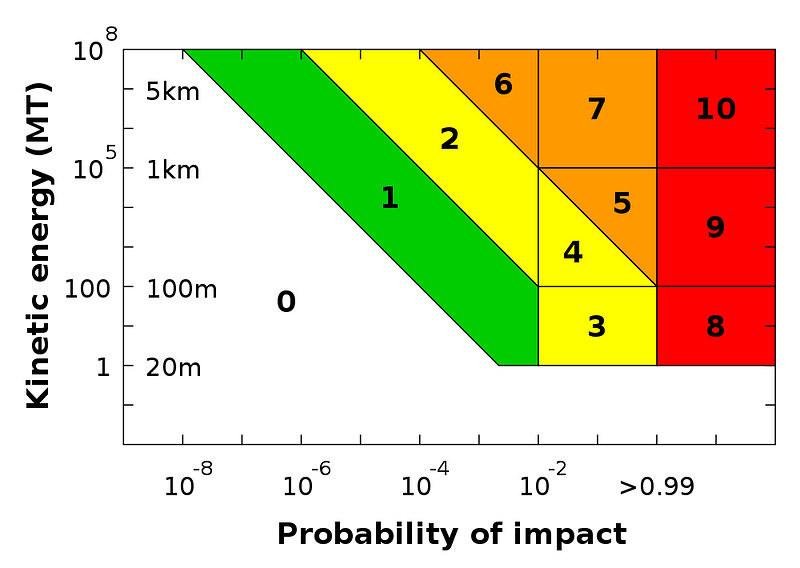
First off, anything as small as any of these 26 asteroid strikes rates a zero on the Torino Scale: the scale we’ve devised for measuring the threat of an asteroid to humans. Fortunately for all of us, we have a wonderful defense shield against the small asteroids: the atmosphere! An asteroid smaller than about 10 meters (33 feet) that hits the atmosphere will not make it down to the Earth’s surface, nor will it affect anything that happens on the ground in any meaningful or destructive way.
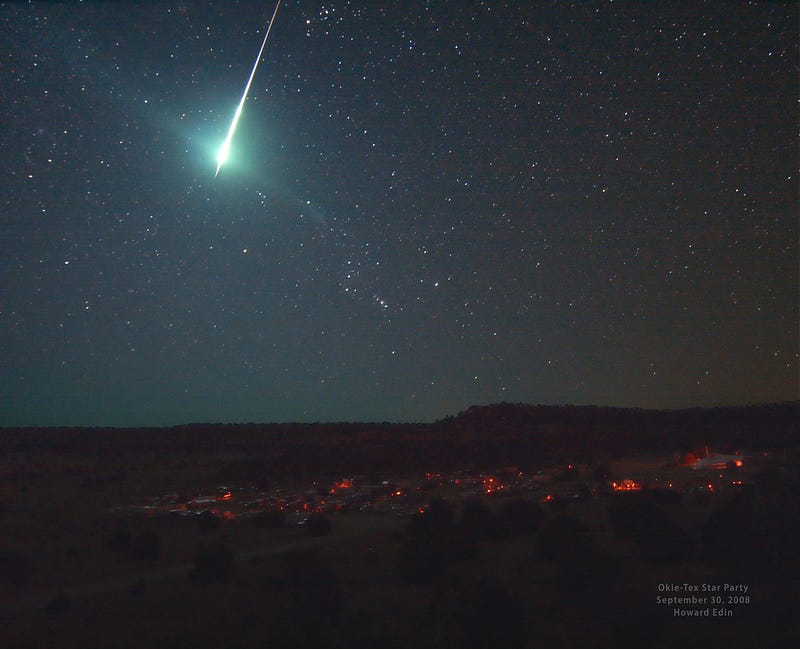
All you get is a brilliant flash of light, known colloquially as a shooting star for tiny ones, or as a bolide (to astronomers, with apologies to geologists) for the larger ones!
Second off, the actual rate of city-killers striking Earth appears to be much less frequent than once-a-century, and that the vast majority of city-killers that do strike Earth occur either over the ocean (and away from heavily populated coastal regions, where they could cause a devastating tsunami) or over extremely sparsely populated regions. It’s estimated that even if a city-killer struck the Earth randomly, it would have approximately an 80% chance of killing no one.
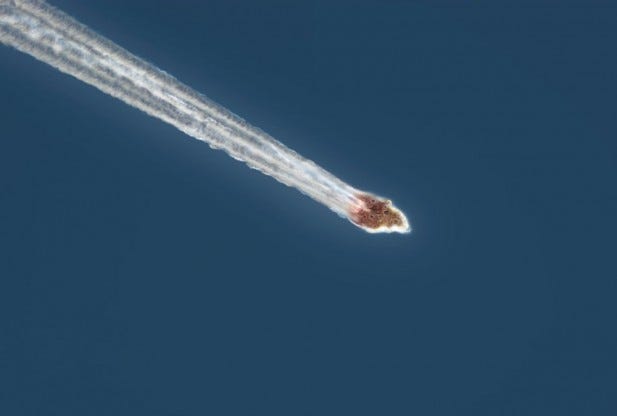
And finally, it is true that the more massive the asteroid gets, the more catastrophic its damage is going to be. Taking the entire Solar System into account, and modeling asteroid strikes as occuring completely randomly (including ones that would end all life on the planet), you can estimate your odds of dying from an asteroid strike in any given year.
Want to know what those odds are? One-in-70,000,000.
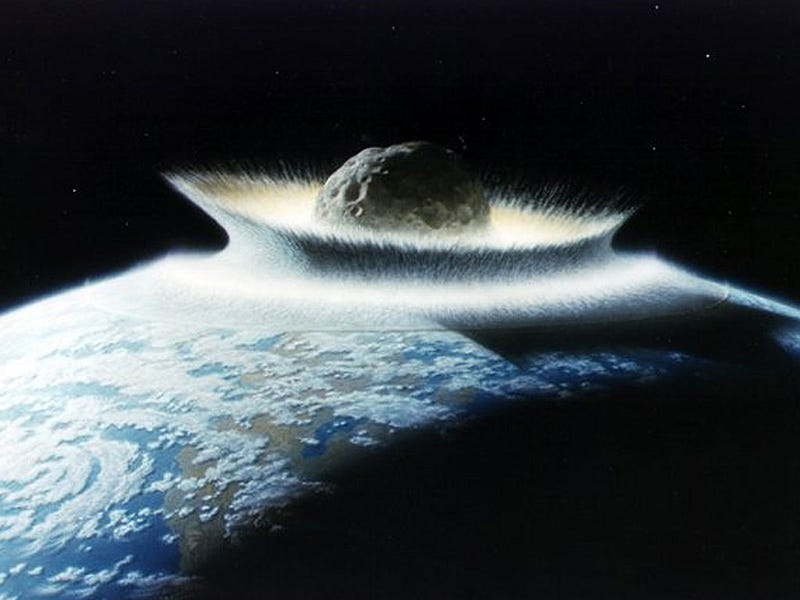
Now you know me: I’m a huge fan of astronomy, astrophysics and space exploration. I absolutely believe that we should be building optical and infrared telescopes to learn more about our Solar System and the asteroids in it, as well as the Universe beyond it.
But I think “fear of getting wiped out” or “fear of a catastrophic asteroid strike” are terrible reasons for doing so. And — I want to be clear here — the reason I think it’s terrible to act out of fear is not some sort of machismo; it’s because this is quantitatively something that’s very unlikely to negatively affect humanity in any appreciable way.
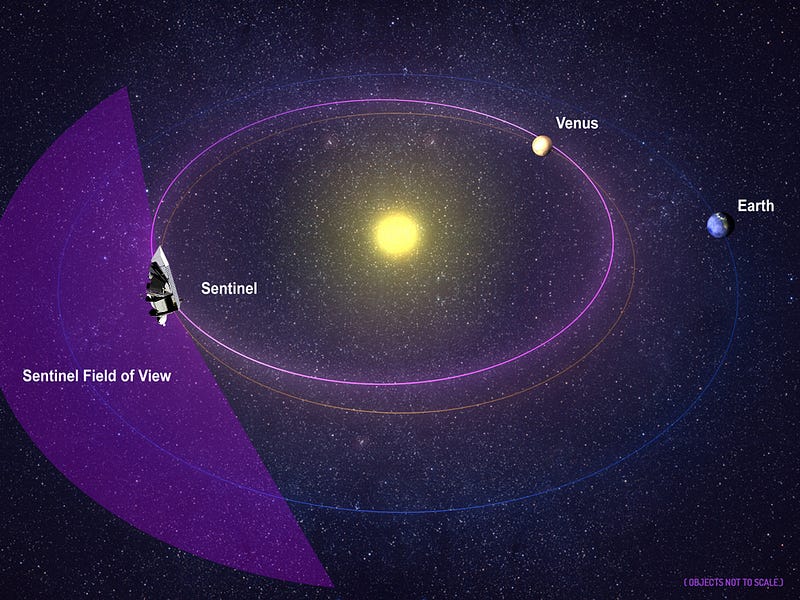
It’s possible that we’ve slightly underestimated our risks, and I think it’s a good idea to fly the asteroid-finding Sentinel Mission that the B612 Foundation is planning. But we shouldn’t be flying it out of fear; the last thing we need is for people to be unfoundedly afraid of the Universe! (You have a much greater risk of dying from a lightning strike, plane crash, earthquake, dog bite or accidental fireworks discharge than you have of dying from an asteroid strike.)
There is no killer asteroid coming, and there’s no reason to believe that there’s a city-killer coming our way in the next year, decade or our lifetime. There’s a risk, but the risk is small and quantified, and even if it does happens, the odds that it will cause tremendous amounts of death or damage is small as well.
The reason to do this type of science is for knowledge, not for fear. I know that many of you think that so long as we invest in science, the reason doesn’t matter, but I give our world more credit than that. If we want to build a world that values and appreciates science, we have to be honest about what it is, what it does, and what the scientific enterprise is all about.
Enjoyed this? Weigh in at the Starts With A Bang forum on Scienceblogs!





